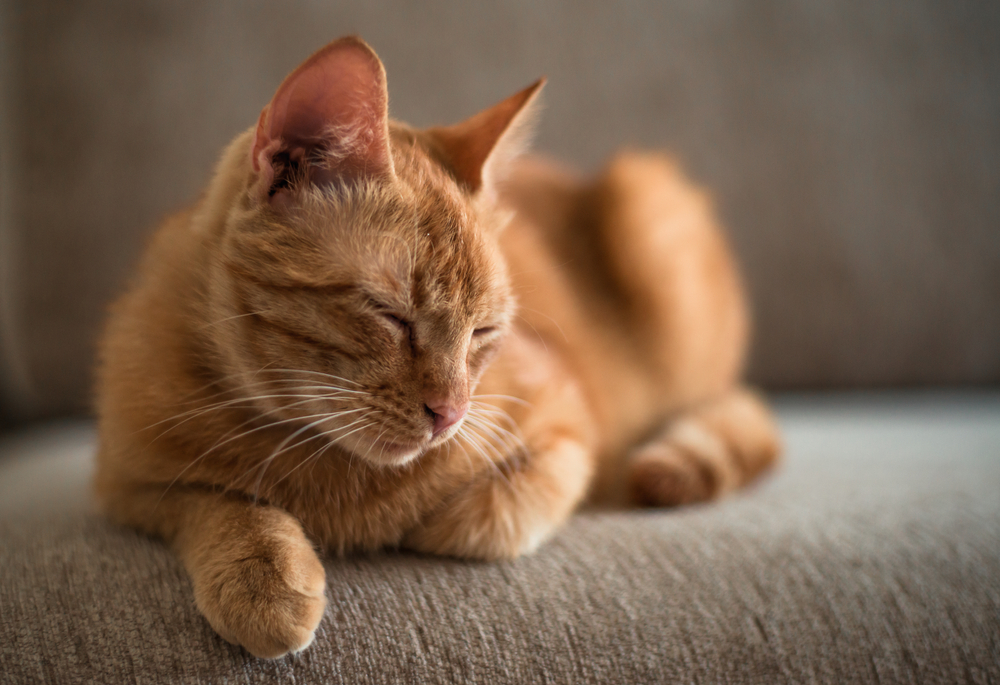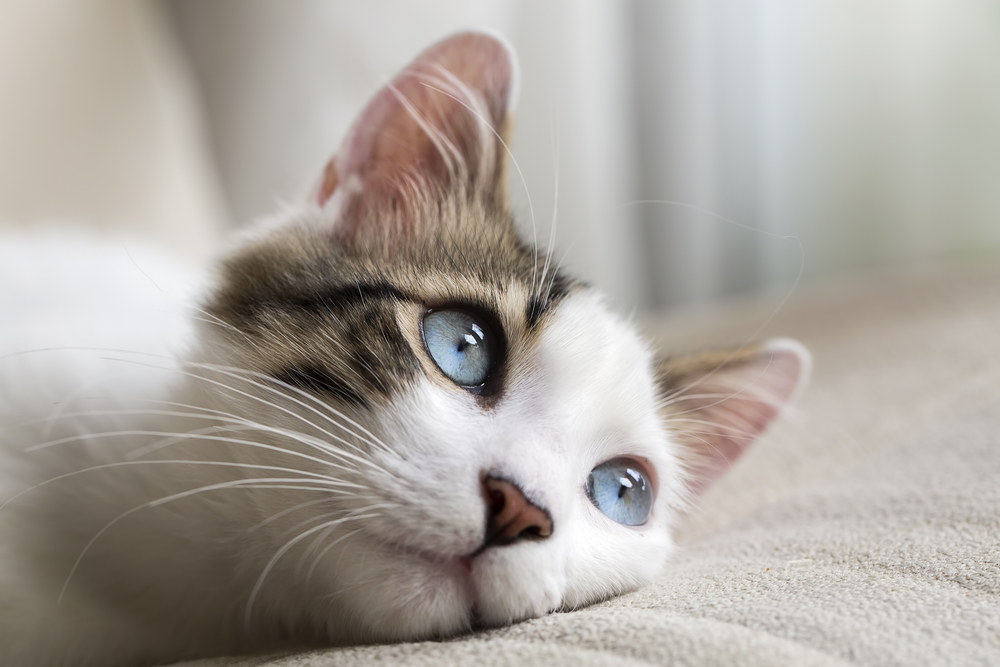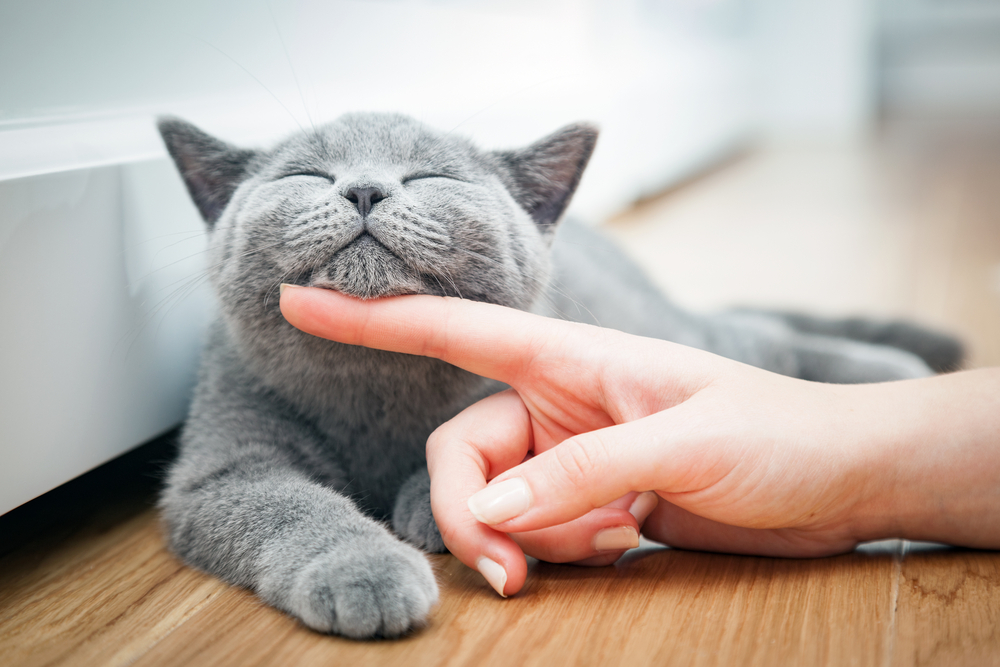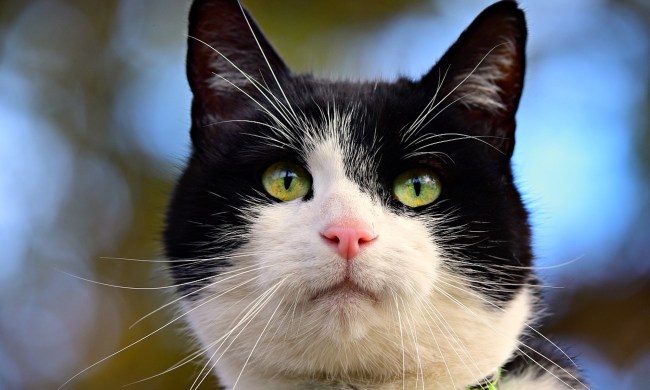Whether your cat was born deaf (i.e., congenital deafness) or became deaf due to accident, illness, or aging, deafness doesn’t mean your cat can’t live a happy and healthy life. If you’ve been wondering how to tell if your cat is deaf, we’ll fill you in on the details like common causes of deafness, how to communicate with your deaf cat, when you should go to the vet to confirm your suspicions, and how to make life easier for your cat to navigate without one of their senses. Let’s get started with the six telltale signs your cat is deaf.
- 1. Your cat doesn’t respond when you call their name
- 2. Your cat doesn’t respond to common household sounds
- 3. Your cat suddenly sleeps longer and more deeply
- 4. Your cat has discharge leaking from one or both ears
- 5. Your cat has started shaking their head or scratching at their ear
- 6. Your cat is much more talkative lately
- Common causes of deafness in cats
- Accommodating a deaf cat
1. Your cat doesn’t respond when you call their name
According to Animal Planet, cats are better able to hear higher frequencies than dogs are. A cat’s hearing range is 48 hertz–85,000 hertz, while a dog’s hearing range is limited to 47–65,000 hertz. In addition to possessing distance hearing up to five times stronger than ours, cats can detect sound so acutely that they can pinpoint the location of potential prey — or a dropped treat — within a few inches in six-one hundredths of a second.
2. Your cat doesn’t respond to common household sounds
Most cats come running when they hear the scoop enter their dry food or the pop of a can. If your cat is nowhere to be found when you ring the proverbial dinner bell, they may not be able to hear the sounds that used to draw their attention.
3. Your cat suddenly sleeps longer and more deeply
Cats sleep an average of 15 hours each day. Without the constant barrage of household noises to disturb their rest, you may notice your cat slumbering on while you vacuum right beside them.
4. Your cat has discharge leaking from one or both ears
Often accompanied by a foul odor, discharge like pus is an indication that your feline friend is suffering from an ear infection. Ear infections are frequently due to inner ear problems, but they can also be caused by an injury. The combination of pus and inflammation can cause so much swelling that your cat won’t be able to hear out of the infected ear.
5. Your cat has started shaking their head or scratching at their ear
Cats with congenital deafness don’t know they lack one of their senses, but if your cat is losing their hearing, they may tip you off with their behavior. Our fur babies don’t understand why their hearing is going, so they may try to shake — or scratch — out any debris in their ears in an attempt to restore their hearing.
6. Your cat is much more talkative lately
If your feline friend is losing their hearing gradually, they may increase the volume of their meows to get your attention. Because they can’t hear well, they think they’re being much too quiet for you to hear them. Fully deaf cats can’t judge how loudly they’re meowing at all, so it’s not uncommon for deaf cats to meow at the top of their lungs.

Common causes of deafness in cats
A trip to the vet is in order if you suspect your cat is deaf. Unless they’ve been deaf their entire lives, you’ll want your vet to perform an exam to determine the cause of their hearing loss. Some causes of deafness — like impacted earwax — may be reversible. While some cats (especially cats with white coats and blue eyes) are more likely to be born deaf, certain breeds are at a higher risk. Cornish and Devon Rexes, Scottish folds, Ragdolls, Persians, Oriental shorthairs, Manx cats, Maine coons, and Turkish Angoras are more likely than other breeds to be born deaf. Other causes include age, some medications — specifically chemotherapy drugs — and toxins, tumors, ear trauma, inflammation, infections, and degenerative nerve conditions.
Accommodating a deaf cat
Here are a few suggestions that can make life easier.
Keep your cat indoors
Whether you’ve always kept your cat exclusively indoors, or they’ve been allowed to roam, you’ll want to keep them inside now. Your cat won’t be able to hear a car (or a predator like an aggressive dog) approach them.
Use vibration to get their attention
Because deaf cats use their other senses to make up for their lack of hearing, they’ll become more sensitive to vibrations and visual cues. When you want your cat’s attention, try jumping around a bit. Your cat will pick up on the vibration and come to investigate.
Rely on visual cues
Even if your cat is deaf, you can still call them for snuggles. Make sure they can see your hand, motion for them to follow, and they’ll eventually learn what your gestures mean. You can also use a laser pointer to lure them into the kitchen when it’s dinnertime.
Maintain a routine
Deaf cats still enjoy playtime and cuddles. If you’re used to playing with a certain toy together, keep it up. Newly deaf cats may become depressed by the sudden change in their hearing status, which makes spending time together all the more important.

Any change in your fur baby’s health is frightening, but living with a deaf cat isn’t drastically different from living with a hearing cat. Take your cat to the vet if you suspect deafness and don’t be afraid to ask for recommendations that will make the transition period easier. With a few adjustments, you and your cat will get back into the swing of things in no time.




